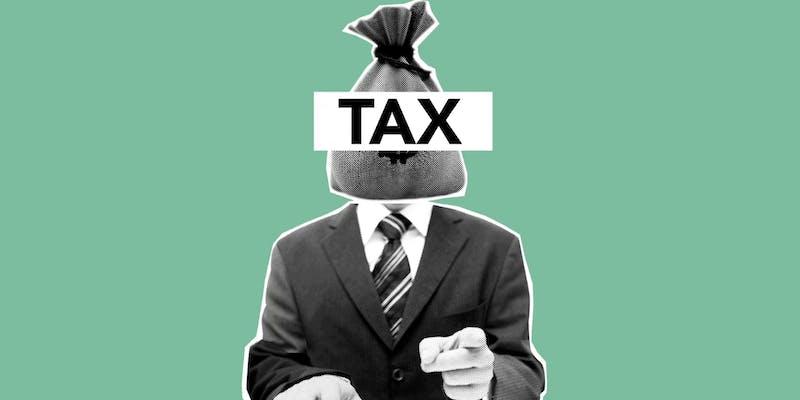Tax Refunds: Understanding Why and How We Get Returns
Nov 20, 2023 By Triston Martin
A tax refund is essentially the government's way of returning any extra tax you've paid over a financial year. This situation arises when the taxes deducted from your income exceed your tax liability. It's like getting back money that was yours all along.
When you estimate tax refund, you're gauging how much you've overpaid. A regular check on your tax refund status is advisable to avoid surprises. People look forward to this refund, often considering it a welcome financial boost.
The Workings of Tax Refunds
Tax refunds are a crucial aspect of annual financial planning for many. The IRS usually sends refunds by check or direct deposit into a taxpayer's bank account. Buy U.S. Series I Savings Bonds with your estimate tax refund. E-filing and direct deposit are the best ways to estimate and receive tax refunds quickly. This streamlines fund transfers and reduces wait times.
Most refunds are processed within weeks of filing the tax return. However, credits like the Earned Income Tax Credit can affect the timeline. EITC recipients can expect their estimated tax refund in March. This delay is a protective measure against fraudulent claims, a concern in past years.
Why Do People Get Tax Refunds?

One common cause of this overpayment is incorrect withholding. If you don't accurately complete your W-4 form, the tax withheld from your wages might be higher than you owe. Ensuring that the W-4 reflects your current financial situation is crucial to estimating tax refunds accurately.
Another factor leading to tax overpayment is changes in your financial circumstances. Life events such as getting married, welcoming a new child, or experiencing shifts in income levels can all influence the amount of tax you owe. Regularly updating your W-4 in response to these changes helps you manage your tax liability more effectively and can reduce the chances of a large tax refund.
Refundable tax credits are another reason why people receive tax refunds. For instance, the Child Tax Credit is highly refundable. Parents can get $1,600 per child in 2023 as a refundable credit. This means they can get a refund if the credit exceeds their tax liability.
Low- and moderate-income families receive EITC refunds. The 2023 EITC ranges from $500 to $7,430, depending on income and family size. When estimating a tax refund, including these credits in your calculations can provide a more accurate picture. People often check their check tax refund to understand how these credits have affected their overall tax situation.
The Different Refundable Tax Credits

Financial planning requires understanding refundable and nonrefundable tax credits. Nonrefundable credits are valuable but can only reduce your tax liability to zero. You will retain the surplus if your credit is within what you owe. This limitation has led to the nickname 'washable credits' because they must fully capitalize on their financial potential.
Conversely, refundable tax credits are more beneficial. They offer the total value of the credit, even exceeding your tax bill. The difference is refunded if a refundable credit brings your owed taxes below zero. Recognizing these differences is critical when you estimate your tax refund or check tax refund status.
Child Tax Credit
The Child Tax Credit gives families up to $2,000 per child. Refundable amounts increase to $1,600 in 2023 from $1,500 in 2022. This credit can significantly increase your tax refund and financial relief.
This credit is essential when estimating a family's tax refund since it changes annually. Regularly checking your tax refund status helps you understand how the CTC affects your finances.
Earned Income Tax Credit
EITC protects low- and middle-income workers. Income, filing status, and dependents determine its 2022 range of $500 to $6,935. By 2023, it increases to a maximum of $7,430. This credit is crucial to consider as you estimate your tax refund.
Eligibility for the EITC can significantly enhance your tax refund, so checking your tax refund status is advantageous to gauge its impact.
American Opportunity Tax Credit
The partially refundable American Opportunity Tax Credit helps families pay for college. It can refund up to $1,000 and eliminate your tax liability. This credit should be a prime consideration for students and their families when they estimate their tax refund.
The AOTC can considerably raise your tax refund; keeping an eye on your tax refund status can help you understand its full benefits.
Premium Tax Credit
The Premium Tax Credit helps low- and moderate-income families afford health insurance. This flexible credit can be applied in advance to lower monthly premiums. If you use less than your full entitlement, the remainder is returned as a refundable credit.
This credit is an essential factor when you estimate your tax refund. Regularly checking your tax refund status is crucial for eligible individuals to see how the PTC influences your overall tax return.
Claiming Your Tax Refund
When it comes to receiving your tax refund, you have several options. The most traditional method is requesting a paper check mailed to you. Direct deposit lets you split your tax refund between up to three accounts, including savings or retirement accounts, making it efficient. You can invest $5,000 in Series I savings bonds with your refund.
You have a three-year window from the original filing deadline to claim your tax refund. This timeframe is beneficial if you miss the April deadline or have yet to file a return from three years prior. Remember that if you received an extension, your three-year period starts from the extended deadline.
However, be aware that only some of your refunds might be available. Your refund may be adjusted if the IRS overpays or you owe child support or student loans. Therefore, if your refund seems more significant than expected, wait to spend until you know the amount.








